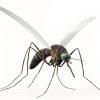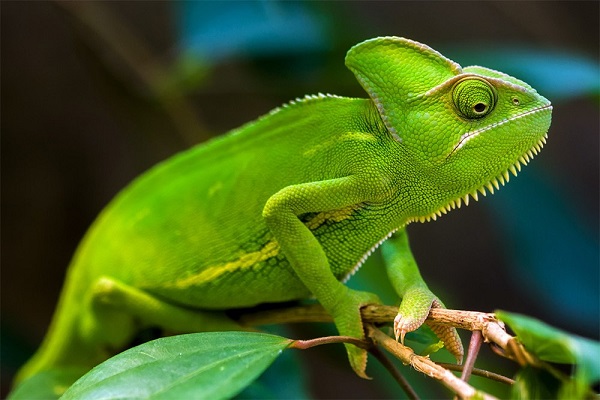
Chameleons are a typical and admiringly specialized clade of Old World lizards, with 200 species depicted as of June 2015. The members of this family are best known for their distinguishable range of colours and their ability to use colour-shifting camouflage.
Among the most mesmerising and terrifying animals on earth, chameleons are gifted with so many unique adaptations—independently rotating eyes, shooting tongues, prehensile tails, and the ability to change their colour. They belong to the family, Chamaeleonidae. Here are 10 fun facts about chameleons.
1. Specialized Feet
A chameleon has two outer and three inner toes on its front feet, and two inner and three outer toes on its hind feet. Each toe features a sharp nail that digs into tree bark. Other animals—including perching birds and sloths—also evolved a similar anchoring strategy, though the five-toed anatomy of chameleons is unique to them alone.
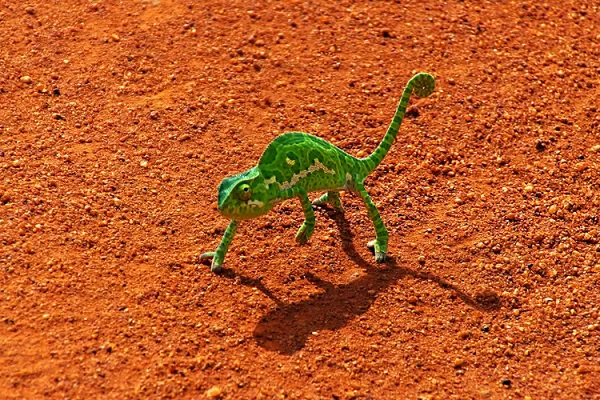
2. They Have Prehensile Tails
Most chameleons except the smallest ones have prehensile tails to wrap around tree branches. Their tails afford chameleons greater flexibility and resilience when climbing up or down trees and, like their feet, help brace against the recoil of a fierce tongue. When a chameleon rests, its tail is curled into a tight ball. Unlike other lizards that can shed and regrow their tails numerous times throughout their lifetimes, a chameleon can’t regenerate its tail if cut off.
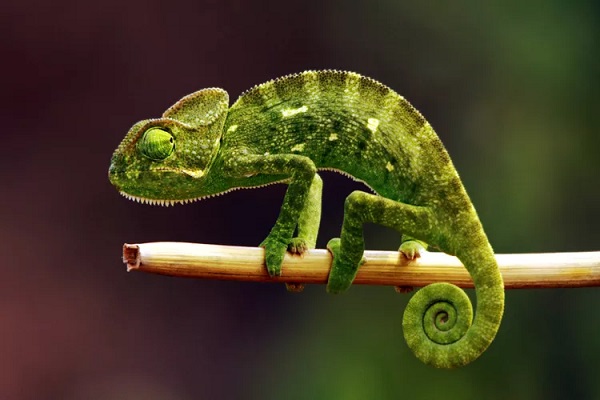
3. Long and Sticky Tongues
On average, a chameleon’s tongue measures approximately one to two times the length of its body, but in smaller chameleon species, this can reach up to 2.5 times their body length (measured from snout to vent).
What’s so special about a chameleon’s tongue?
Special collagenous tissue within the chameleon’s tongue is one of the secrets behind its effectiveness. This tissue shrouds a bone at the core of the tongue and is surrounded by a muscle. According to Professor Moulton: The muscle – the outermost layer – contracts to set the whole thing in motion.
The independently swerving eyes of a chameleon wouldn’t do much good if it couldn’t close the deal on prey. The accelerator muscle launches the tongue at high speed, and the hypoglossus snaps it back with the prey attached to the end. Amazingly, a chameleon can launch its tongue at full force even in temperatures low enough to make other reptiles extremely sluggish.
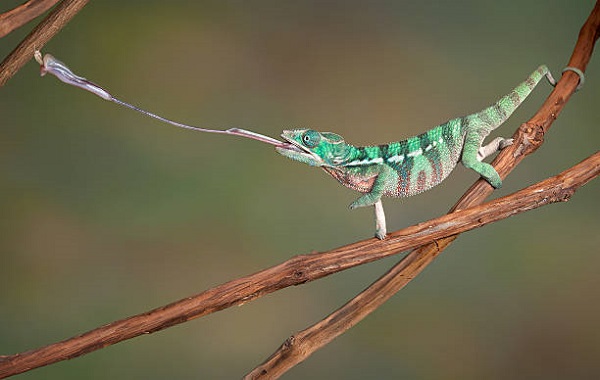
4. Ability To Change Skin Colours
Most chameleons can change their colour, and design, by exploiting the pigments and crystals of guanine (a type of amino acid) embedded in their skin. This trick comes in handy for hiding from predators (or curious humans), but most chameleons change colour to signal to other chameleons.
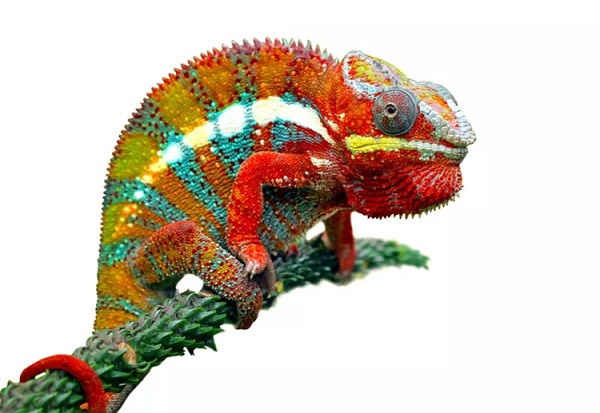
5. They See Ultraviolet Light
UV radiation has more energy than “visible” light detected by humans and can be dangerous in large doses. One of the most mysterious things about chameleons is their ability to see light in the ultraviolet spectrum. This is said to allow the chameleon also to target its prey perfectly.
A fact once divulged that chameleons become more active, social, and interested in breeding when exposed to UV rays, possibly because UV light stimulates the pineal glands in their tiny brains.
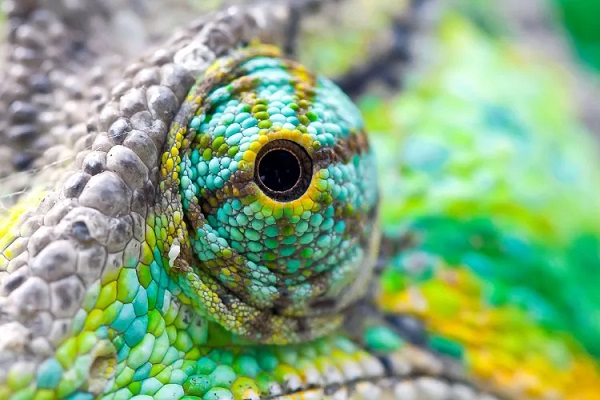
6. They a Tree-Huggers
Most chameleons like to set up camp in trees, and as such are highly developed to traverse trunks and branches. With their toes on the hind feet reversed. These feet allow chameleons to grasp onto rough or narrow branches with ease, aided by the sharp claw on each toe. Their prehensile tails like we mentioned above, also play a significant to their tree-hugging mastery.
Males usually have horns and spikes, whereas females don’t.
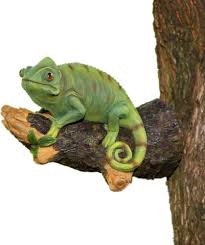
7. Chameleons Have Good Eyesight
Chameleons’ eyesight has developed both to help them catch prey and, as we’ve seen, to help them escape predators. They can focus their eyes relatively well, meaning they can judge distances and spot prey between 5 and 10 metres. Also, the ability to see UV (Ultraviolet light) also plays a good role here, as disclosed earlier.
Though they may have relatively good eyesight, chameleons have poor hearing, only able to hear noises between 200Hz and 600Hz, something you might wish you had when the person next door is keeping you up all night.
8. Sizes
The smallest chameleon is the Brookesia micra and its size is like that of a match head, while the largest is the Parson’s chameleon, which can grow more than 2 feet long.

9. Reproduction
Most chameleons lay eggs while some give birth to live young.
10. They Have Sticky Spits
The spit of the chameleon just as their tongue is a weapon and tool same way their spit comes handy for them. The spit sticks to whatever its been spat on making it a special tool for them.


